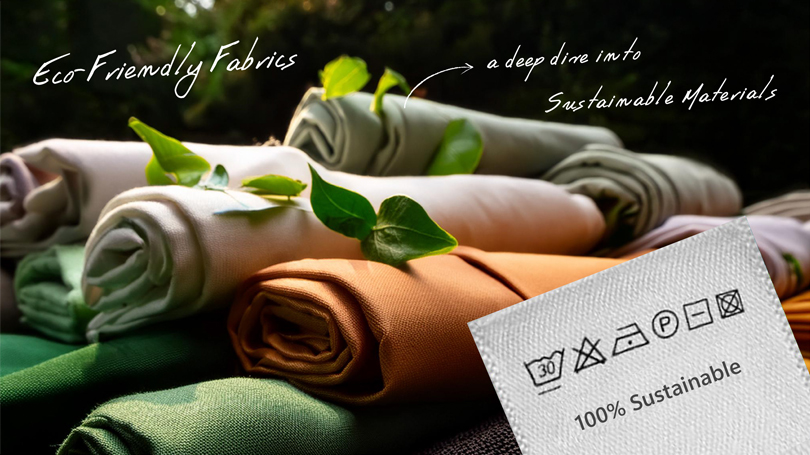2024.06.07Eco-Friendly Fabrics: A Deep Dive into Sustainable Materials

Introduction
The fashion and textile industry is increasingly scrutinized for its environmental impact. As awareness of ecological issues grows, eco-friendly fabrics and sustainable materials have become essential in reducing the industry's carbon footprint. These materials offer a viable alternative to traditional textiles, promoting environmental health and sustainability. Understanding these fabrics and their benefits is essential for making sustainable choices in your wardrobe and lifestyle.
Understanding Eco-Friendly Fabrics
What Are Eco-Friendly Fabrics?
Eco-friendly fabrics are textiles produced with methods and materials that have a low environmental impact. They often come from renewable sources, require less water and energy for production, and avoid harmful chemicals. Key characteristics include biodegradability, recyclability, and sustainable sourcing.
The benefits of using eco-friendly fabrics extend beyond environmental conservation. They result in healthier, safer products free from harmful chemicals, benefiting both consumers and workers in the supply chain. Moreover, these fabrics can contribute to a circular economy by promoting recycling and reuse.
Why Choose Sustainable Materials?
Sustainable textile materials reduce resource consumption, minimize pollution, and decrease waste. They often require less water and energy to produce and can help lower greenhouse gas emissions. By choosing these materials, consumers can actively participate in conserving natural resources and reducing environmental degradation.
Economically, sustainable textile materials can lead to long-term cost savings by promoting efficient use of resources and reducing waste disposal costs. Socially, they improve working conditions and health outcomes for workers in the textile production process, fostering a more equitable industry.
Types of Sustainable Materials
- Organic Cotton
Organic cotton is grown without synthetic pesticides or fertilizers, promoting soil health and biodiversity. It uses significantly less water and energy compared to conventional cotton, making it a more sustainable choice.
- Recycled Nylon
Recycled nylon is made from discarded fishing nets and other nylon waste, reducing the need for virgin nylon production, which is energy-intensive and environmentally damaging, this helps clean up marine environments and reduces landfill waste.
- Recycled Polyester
Recycled polyester is produced from plastic waste, such as PET bottles. This process diverts plastic from landfills and oceans and reduces the need for virgin polyester, which is derived from petroleum. However, it also faces challenges. The beverage industry is increasingly required to recycle and use higher proportions of recyclate in bottles, as bottle recycling is more ecologically sensible. Bottles can be recycled almost endlessly, but processing them into textiles ends the cycle.
< View Our Best-Selling Recycled Polyester Collections >
- Textile to Textile
Textile-to-textile recycling involves converting textile waste directly back into new textiles, bypassing the need for intermediate plastic bottle recycling. This method reduces the energy and resources needed for production and helps close the loop in the textile industry, providing innovative solutions for reducing textile waste. In an ideal world, we would simply switch to recycling textiles instead of plastic bottles, enhancing sustainability in the textile industry.
< View Our Textile to Textile Collections >
- Bamboo
Bamboo is a highly sustainable crop that grows quickly without pesticides or fertilizers. Its production process is less water-intensive than conventional textiles. Bamboo fabric is soft, durable, and has natural antibacterial properties, making it suitable for various applications in clothing and home textiles.
Conclusion
Eco-friendly fabrics and sustainable materials are essential for reducing the environmental impact of the textile industry. By understanding and choosing these materials, consumers can contribute to a more sustainable future. The benefits of these choices extend beyond environmental conservation to economic savings and social improvements.
In summary, eco-friendly fabrics offer a practical solution to the environmental challenges posed by the textile industry. Their adoption can lead to lower energy consumption, reduced water usage, and minimized chemical use, ultimately helping to reduce our carbon footprint. Solution-dyed (dope-dyed) fabrics, for example, integrate color during the fiber production stage, eliminating the need for additional dyeing processes, saving millions of liters of water annually. By making informed, sustainable choices, we can all play a part in creating a greener, more sustainable world.